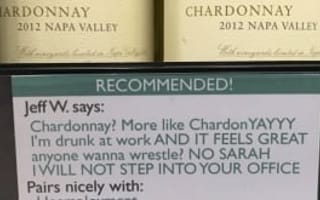I recently read an excellent article about how information overload is affecting a customer’s ability to make a decision, and therefore, a purchase. It really highlighted something that’s been bothering me for a while now as I’ve been working with clients on content: mainly, that we're cranking out a lot of content and it's all starting to sound the same.
As marketers, we’ve been marching to the drum beat of content for many years now. We’ve worked hard to grow social media and blog followings through original content. This piece for the top of the funnel, two or three more pieces for the middle, and yet another one to help seal the deal at the bottom. Marketing automation tools empower us to blast relevant emails at every step of the way to help customers on their decision journey.
What we forget is that our competitors are doing the exact same thing, and together we’re killing a prospect’s desire to self-educate under the virtual weight of a thousand blogs, videos, infographics, and PDFs.
I’m not saying that we need to throw content marketing out with the bathwater, but I do think it’s time to change the content we’re putting in front of customers. I’m going to call this theory Shelf Tag Marketing, and to understand what I’m talking about you need to picture yourself in a liquor store. (Difficult, I know.)
Let’s say you go in to pick up a few bottles of wine. There are some people who research wines ahead of time and know exactly what they want to purchase when they walk in. And then there’s the rest of us. Pushing a cart up and down the aisles, staring at a vast amount of green glass not having any clue as to which ones we should buy.
Cue the wine shelf tags.
How many of us zero in on those little handwritten tags with gold yellow stars to read a review or the number of points some wine magazine gave that particular bottle? Most of us, I’m willing to bet. Why? Because it feels impossible to make a decision without them when there are thousands of bottles to choose from. So what is there to glean from this successful tactic?
#1 – Your content needs to be more disruptive.
I don’t think these wine shelf tags are actually real, but who wouldn’t stop to read and enjoy one of these!? And maybe even buy the bottle. Never underestimate what a little bold humor and entertainment can do for content. I know I like brands that aren’t afraid to show a little personality.
#2 – Your content shouldn't be afraid to be "salesy."
We, as marketers, have been programmed to think that any hint of chest-thumping by a brand is going to slam the door in our face nowadays, but we’re at a point where we need to reintroduce a little humble bragging into our helpful education. Think about the wine tag that explains the notes of the vintage and what it pairs well with, but also includes a review or points rating. Makes for an easier decision, right? It’s all about balance.
#3 – Your content needs to place you in a smaller sandbox.
On any given aisle in a liquor store there are hundreds of different wines. But when only the wines with shelf tags are considered this number drastically reduces to, perhaps, 20 or 30 bottles. Now the customer is working with a much smaller sandbox from which to choose.
Sure, your wine may only be advertising 88 points compared to the shelf tag of the 91-point bottle right next to yours, but you might get picked for being several dollars less expensive. You never know.
The point is that you have a much better chance of being purchased by putting this information out there and seeing what happens. Show the ratings! Stop hiding the pricing! Do a side-by-side comparison!
We’re so afraid to bluntly compare ourselves to our competitors (especially if we’re not cheaper or better), but it might actually win you the sale because you build trust and goodwill in the process. Because you made it easier for the customer to educate themselves and make a quicker decision.
Everyone in the industry likely thought Progressive Insurance was crazy for comparing rates to other providers as their sales ploy. But who’s laughing now?
If you're looking for a fresh take on your content marketing, I'd love to connect you to our team!



